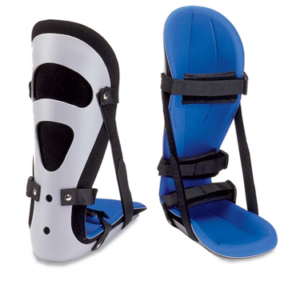Contact Us
Infinite Technologies Orthotics And Prosthetics News

February 21, 2022
The sensory dynamic orthotics (SDO) are a custom made to measure product, designed to provide compression to increase sensory and proprioceptive feedback as well as support to the musculoskeletal system [1]. The compressive garment comes in a wide range of designs and style options, from a glove to a full body suit.
November 12, 2020
Signs of damage such as cracks, warping and compressed padding are the first indicators there may be an issue. Check the arch of the orthotic. When the arch is compressed it should retain a sturdy shape. Arches that collapse too easily do not provide the support you need.

October 3, 2020
No matter what your activity level is, it is important to stretch your ankles and calves every single day. Whether you are an active person or someone who is required to be seated majority of the day, stretching consistently will allow an increase in flexibility, decrease pain, and reduce your risk of injury such as Achilles tendinitis.
February 13, 2020
Adolescent Idiopathic Scoliosis is an abnormal curvature of the spine that appears in late childhood and into a patient’s teenage years. It is diagnosed through physical exam and x-rays. The spine develops a curvature, usually presenting as an S or C shape and can also have slightly twisted or rotated presentation.
January 13, 2020
The world of Orthotics/Prosthetics and the world of Physical Therapy. Two worlds that at times have collided, but when collaborative they can have a profound impact on the outcome of a patient’s care.
By Scott
•
July 13, 2019
Have you been in an accident and injured your cervical spine? Have you had corrective surgery in cervical or upper thoracic spine? Here is some information that will help you during your healing process and how to properly wear your doctor prescribed cervical collar or cervical-thoracic orthosis (CTO).
By Scott
•
July 4, 2019
One of the important features of a prosthesis for lower limb amputees is the prosthetic foot. There are many different models of feet by several companies, such as Otto Bock, Ossur, Endolite, Freedom Innovation and College Park. As the prosthetist knows, choosing the right prosthetic foot is very important for the patient. The foot can help the patient perform specific tasks, such as running, or just help with every day walking. As the field of Prosthetics has evolved, so has the feet.
By Scott
•
June 5, 2019
A detailed written order is a document used to authorize what was ordered by a patient’s treating/prescribing physician. Detailed written orders must include all billable items, accessories or supplies related to the base item that is ordered. Some DME suppliers use prepopulated forms for their detailed written orders. If the supplier provides their own form, on these forms, the final document that is signed by the physician must clearly state what item(s) is being ordered for the patient. This may be done in two ways: • The DME supplier may indicate the items that are being provided before sending the form to the physician. The physician can then review the form and accept the items marked by the supplier or, make any necessary changes. The physician must then initial and date the revised entries. • The DME supplier may send the form to the physician without any items selected and ask the physician to indicate which items are being ordered. The physician must make their choice very clear. In each case, the physician must sign and date the form before returning it to the supplier. A DWO is required prior to billing. All DWO’s must include: Patient/Beneficiary’s name, date of the order, detailed description of all items, prescribing physician’s signature and date. Friendly Reminders • Medicare requires an order for every item of durable medical equipment. • Signature and date stamps are not allowed. Signatures must comply with the CMS signature requirements outlined in PIM 3.3.2.4. • If a DME supplier does not have a faxed, photocopied, electronic or pen and ink detailed written order signed and dated by the prescribing physician in their records before they submit a claim to Medicare, the claim will be denied. • If the claim is for an item for which an order is required by statute (e.g., therapeutic shoes for diabetics), the claim will be denied as not meeting the benefit category and is therefore not appealable by the supplier (see CMS Manual System, Pub. 100-04, Medicare Claims Processing Manual, Chapter 29). • For all other items, if the DME supplier does not have an order that has been both signed and dated by the treating physician before billing, the item will be denied as not reasonable and necessary, except for items requiring a written order prior to delivery. If an order is taken verbally and sent to the physician for a signature and date, there are two documents: the verbal order and the written order with the physician’s signature and date. If a beneficiary comes in with a prescription containing all the elements of a detailed written order, then one document is on file. It is important to remember that if an item is dispensed based on a verbal order and a written order is provided afterwards, both orders must be retained. It is not adequate to only have a written order after dispensing an item. There must be documentation to show the verbal order was received prior to dispensing the item. Resources: https://med.noridianmedicare.com/web/jddme/topics/documentation/detailed-written-orders https://cgsmedicare.com/jc/pubs/news/2010/0410/cope12010.html


